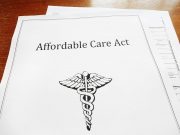Tag: Insurance: Lack Of
2009 to 2018 Saw Increase in Total Expenditure for Insulin
Out-of-pocket cost of insulin increased from $1,678 to $2,800 per person per year in pre- to post-ACA period for uninsured population
Uninsured Rate Did Not Change in 2020 for 18- to 64-Year-Olds
Prevalence of certain unhealthy behaviors decreased, while self-rated health improved, regardless of cancer history
Just 8 Percent of Americans Lack Health Insurance, a Record Low
Before last year's decline, the rate of uninsured Americans was in double digits for decades
Diagnosis With Late-Stage Cancer More Likely Without Private Insurance
For all stageable cancers combined, uninsured with stage I disease have worse survival than privately insured with stage II disease
30.0 Million People of All Ages Uninsured in U.S. in 2021
For adults aged 18 to 64 years, 13.5 percent were uninsured, 21.7 percent had public coverage, 66.6 percent had private coverage
Affordable Care Act Had Limited Effects on Reducing Uninsurance
Findings show great variation in reducing uninsurance for Black, Hispanic, and low-income adults
ACA Protects Coverage for Pediatric Cancer Patients
Dependent coverage provision cuts risk for insurance loss by 15 percent
Standardized Treatment Improves Outcomes in Germ Cell Tumors
Outcomes similar for patients treated at public safety net hospital, academic tertiary care center
Expanding Medicaid in Holdout States Could Insure 3.9 Million
Given the increase in uninsured due to COVID-19-related unemployment, this estimate is likely low
Lack of Insurance Tied to Later Stage of Breast Cancer at Diagnosis
Almost half of higher stage of disease at diagnosis in racial/ethnic minorities explained by insurance status














